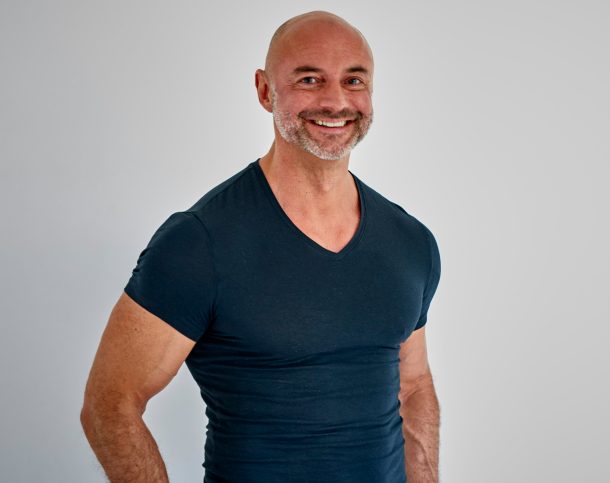“How do you create clients Arnold?”
Oh that’s easy, all you have to do is…
Um…I wish I had some magic formula to share with you.
Spoiler alert: I don’t.
However, I do have some valuable insights to reveal thanks to some early awkward attempts which make me wince looking back.
Creating clients is an art which can seem daunting, challenging and frustrating particularly if you’re starting out and keen to get your coaching business off the ground.
To be successful takes more than just being a great coach, it requires mastering the art of the proposal.
The proposal is the link which turns a powerful coaching conversation into a powerful coaching relationship.
So today, let’s take a look at some of the key lessons I’ve learned, applied and which have enabled me to work with some of the most inspiring people I know.
1. Embrace the power of connection
Before you dive into making a proposal, take a deep breath.
Coaching is a uniquely personal, vulnerable, transformational journey which relies deeply on trust and connection.
It’s not about transactions or closing sales; it’s about building relationships.
The more you get to know your potential client, the better you can serve them and the stronger your proposal becomes.
Understanding the power of true connection sets the tone for being authentic, intentional and honest throughout the process.
2. Stop trying to be perfect
Don’t expect your prospective client to be vulnerable and authentic if you’re too busy trying to be perfect.
When you don’t show up as your authentic self, complete with vulnerabilities clients will see straight through you and you’ll lose connection and trust.
Authenticity and vulnerability are powerful tools in your arsenal.
Use them.
Show you’re human. Share an experience. Tell a story.
You’ll be surprised at how much it impacts the conversation and builds rapport.
3. Slow down
In today’s helter-skelter word, slowing down feels counterintuitive. Yet it’s crucial in coaching.
Slowing conversations down accelerates deeper connections, fosters trust and provides a fertile space for insights to surface.
Instead of rushing in to make your proposal, talking logistics, pricing or how often you’ll meet, slow it down. Take time to understand your client, their wants and their aspirations.
The slower and more deliberate your approach the greater the opportunity to have richer, more insightful conversations.
The more insightful conversations the more possibilities emerge of what working together might look and feel like.
4. Reflect their world
Delivering a powerful conversational proposal requires you to be able to hold a mirror up to your client’s world and have them see themselves in unique ways.
The more they see themselves in your proposal the more engaged and active they will be.
Focus attention on their aspirations, mirror their struggles and highlight their potential so that they feel you understand their challenges and believe you can confidently work together to find ways to overcome them.
5. Lead with confidence
Confidence is contagious.
If you don’t believe in yourself and you’ve got gremlins running the belief show, it’s going to be a stretch to expect your clients to believe in you.
Be firm and confident in your proposal.
Show them you believe in co-creating a coaching roadmap to bring change and your clients will feel your confidence and follow the energy and direction.
6. Speak their language
Avoid excessive jargon or trying to be too clever.
It’s such a turnoff.
Use the language and terminology your client uses. This will make them feel understood and demonstrate you get them and speak their language.
Simplicity is the key to effective communication.
7. Make it personal and specific
Painting a picture of how coaching might impact your clients lives using generic “coachy” phrases is bland, uninspiring, and guaranteed to make them glaze over.
The most cliché include, “We’ll unlock your full potential”, “Together we’ll achieve your goals”, or “We’ll focus on self improvement,” etc
Instead, make it specific and personal.
Tailor your language and message to the specific needs and aspirations of your client, so that you can demonstrate genuine interest in knowing why and how you intend supporting their journey and growth.
Tip: If you don’t know what these are, you’re not ready to make a proposal.
8. Create a roadmap
Provide a framework which outlines the primary areas you’ll be addressing in your coaching approach.
These are the key areas which the client has identified as challenges, opportunities or pain points which provide a roadmap for what you’ll be working on.
Examples include: Vision, Strategy, Mindset, Skillset and Energy as specifically related to the client’s needs and tailor your approach accordingly.
A powerful way to achieve this is to encourage clients to write down on a piece a paper the type of work you’ll be doing together and visualising successful outcomes.
This exercise makes the coaching journey tangible and sets clear expectations.
It also allows the client to explore and voice any reason for saying “no”, working through these and creating a positive shift in energy.
9. Be clear on logistics and pricing
When you’ve arrived at the point of asking if a prospective client would like to know the logistics of working together, be clear and matter of fact.
Explain in simple terms how often and for how long the coaching process will be. Tell them the exact nature of where, when and how you’ll be working together and note if any assignments are agreed when they will be completed.
Practice your pricing until it rolls off your tongue naturally.
There’s nothing worse than being nervous, unsure or uncomfortable talking about money which can lead to lost clients.
Slow down. Don’t rush this.
Let the client absorb the information so that they can establish a clear picture of what being coached entails.
10. Challenge the yes
“Yes! I’d love to work with you!”
Not so fast. Not so fast!
Being confident to challenge the yes might seem edgy but it’s this unusual step in which the client’s commitment and readiness for coaching may truly surface.
By encouraging clients to reflect on potential obstacles, uncertainties and reasons they might say ‘no’, actually helps them to address their own doubts and fears.
This not only validates their readiness but also empowers them to take ownership of the process.
I’ve found with my own clients those who have overcome these self-raised objections are more likely to be dedicated, engaged, and primed for success.
Here’s a list of 10 key action Items
- Invest significant time in serving your clients deeply
- Slow down and avoid rushing into proposals
- Provide space for insights to occur and for relationships to develop
- Continually seek permission to take the conversation deeper
- Focus on the client’s vision and goals when discussing the prospect of working together
- Make it specific and personal focusing only on the clients requirements
- Clearly lay out the logistics, including fees and commitments
- Practice articulating your fees until it becomes second nature
- Help potential clients express the value of coaching in their own words
- Encourage clients to challenge their initial ‘yes’ to ensure they’re fully ready for the coaching process
Now prioritise these action steps and pick 2-3 to work on for your next proposal.
Conclusion
Mastering the art of the proposal isn’t a skill you acquire overnight. It takes time, practice, and a deep commitment to self-evaluation and improvement.
However, by integrating these insights into your practice, you’ll begin to see a transformation – not just in the way you interact with your clients, but also in how they respond to you.
And remember, as a coach, your journey is never complete.
Stay curious, stay humble, and always be learning.


